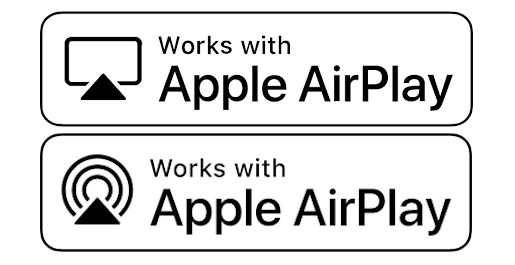
Understanding AirPlay Technology: A Comprehensive Guide

Understanding AirPlay Technology: A Comprehensive Guide
Quick Links
Key Takeaways
Apple AirPlay is a wireless protocol for sharing music, video, photos, and screen mirroring between smart devices on the same network.
AirPlay is one of several standards for wirelessly sharing audio, video, and other media to smart TVs and streaming devices like the Apple TV and Roku . It’s an incredibly handy feature, but it has some quirks that come with being a proprietary Apple technology.
What Is AirPlay?
In short, AirPlay is a proprietary wireless protocol made by Apple for sharing audio, video, photos, and screen mirroring between devices on the same network. A common example of AirPlay’s functionality is sharing content from an iPhone to a TV screen.
You can stream pretty much anything with AirPlay. Music and video are probably the most common, but it also works with screen mirroring , presentations, and podcasts. Originally, AirPlay was a one-to-one protocol, meaning you could only stream from one device to another, but AirPlay 2 changed that.
Introduced in 2018, AirPlay 2 is the biggest update the protocol has seen so far. It improved performance, added streaming audio to stereo speakers, and streaming to multiple devices at the same time. It also made AirPlay control available through Siri and the Control Center on iPhone and Mac .
AirPlay was originally introduced in 2004 as a feature in iTunes called “AirTunes.” It allowed for streaming music from iTunes to an AirPort Express, which had a 3.5mm audio jack for speakers. AirTunes was renamed to “AirPlay” in 2010, which was also when it gained the ability to stream audio and video to an Apple TV .
Which Devices Support AirPlay?
When it comes to devices that support AirPlay, there are two categories they fall into: “Senders” and “Receivers.” The devices that can be AirPlay “senders” are essentially all from Apple: iPhone , iPad , iPod, Mac , and iTunes (even on Windows ). The HTC 10 in 2016 was the only Android device with AirPlay streaming support.
AirPlay “receivers,” on the other hand, have a lot more variety. Apple has a full list of speakers and TVs that are AirPlay-enabled. Some of the big brands include LG, Samsung, Sony, and Vizio, Amazon Fire TV, Bang & Olufsen, Bose, JBL, Pioneer, Sonos, and Yamaha. Certain Apple devices can also be AirPlay receivers: Apple TV , HomePod , and Mac PCs running macOS Monterey and newer.

There are a lot of AirPlay receiver devices on the market. An easy way to spot a device with AirPlay support is the “Works with Apple AirPlay” label that can be found on packaging.
AirPlay vs. Chromecast
Apple’s AirPlay and Google’s Chromecast are easily the two most popular wireless display standards available today . The two have a lot in common, but there are some big differences as well.
A “Chromecast” is a physical streaming device , but the ability to “cast” content is available on many other devices through Google’s “Chromecast Built-in” protocol.
The two services work essentially the same way. When you want to stream some music or a video to another device, you tap a button in the app, choose a receiving device, and it’s beamed wirelessly over the network. When it works well, it feels like magic.
Related: Wireless Display Standards Explained: AirPlay, Miracast, WiDi, Chromecast, and DLNA
The biggest difference between AirPlay and Chromecast is a similar story to many things in the Apple and Google ecosystems. You need an Apple device to stream with AirPlay. It’s as simple as that. However, you don’t need an Android or Google device to Chromecast. In fact, you can cast with an iPhone, iPad, or Mac, too.
How to Use AirPlay
Using AirPlay is a matter of simply looking for the AirPlay icon in apps or using the screen mirroring feature from the Control Panel on Apple devices. Sometimes, the AirPlay functionality can be accessed from the Chromecast menu, like in the YouTube app.

The beauty of AirPlay is it generally “just works” very easily without much effort required. We have a number of guides for using AirPlay in various ways with various devices.
- How to Mirror Your Mac, iPhone, or iPad Screen on Your Apple TV
- How to Stream Videos from Your iPhone or iPad to an Apple TV Using AirPlay
- Did You Know iTunes for Windows Supports AirPlay, Too?
- How to Mirror Your iPhone Screen to Roku
- How to Use AirPlay (Screen Mirroring) on a Mac
- How to AirPlay From iPhone or iPad to Your Mac
- How to Mirror Your iPhone or iPad’s Screen on Your Windows PC
That’s the story on AirPlay. Like many things in the Apple ecosystem, AirPlay is more limited than its counterparts. However, that comes with the added benefit of typically working a little more seamlessly (but not always ). AirPlay is an essential feature to know if you find yourself inside Apple’s walled garden.
Also read:
- [Updated] 2024 Approved Advanced Tips for Integrating Markers in Videography
- [Updated] 2024 Approved Anon FB Live Watchers Group
- [Updated] Uncover Collective Media on Messenger Networks for 2024
- How Can I Unlock My Apple iPhone SE (2022) After Forgetting my PIN Code? | Dr.fone
- How to Troubleshoot Unresponsive Apps: Essential Solutions for iOS and Android Users
- In 2024, The Updated Method to Bypass Tecno Pop 7 Pro FRP
- In 2024, Universal Unlock Pattern for Nubia Red Magic 9 Pro+
- Install Intuitive Intel AC 7260 Wireless Network Adapter with This Simple Guide.
- Retrieve Lost iPhone Mailbox Items: Expert Tips & Troubleshooting Steps
- Step-by-Step Process: Restoring an iPhone's Factory Settings Post-Jailbreak
- Troubleshooting Tips: How to Fix 'iOS 17 Check-In' Feature Malfunctions on Your iPhone
- Title: Understanding AirPlay Technology: A Comprehensive Guide
- Author: Daniel
- Created at : 2025-02-16 20:33:09
- Updated at : 2025-02-19 16:51:56
- Link: https://os-tips.techidaily.com/understanding-airplay-technology-a-comprehensive-guide/
- License: This work is licensed under CC BY-NC-SA 4.0.